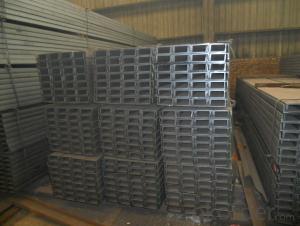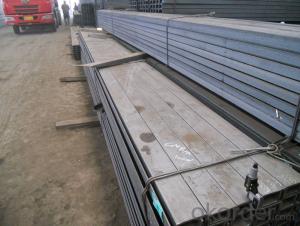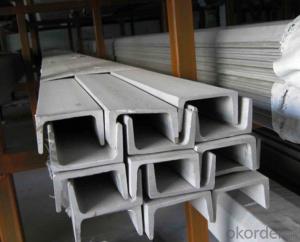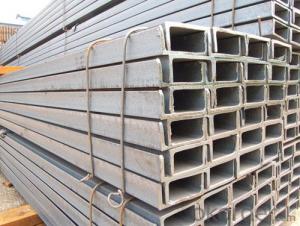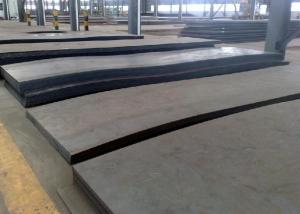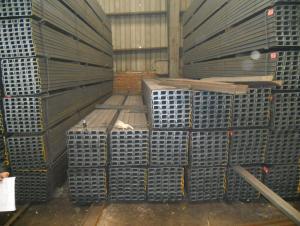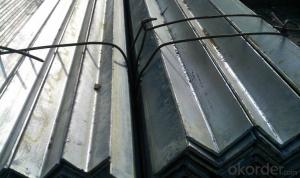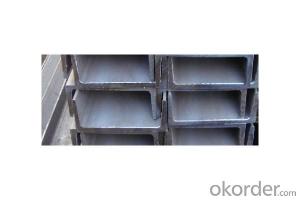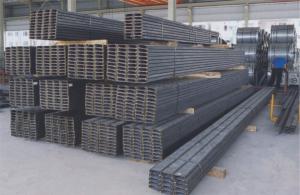Hot Rolled GB Standard Channel Steel
- Loading Port:
- China Main Port
- Payment Terms:
- TT or LC
- Min Order Qty:
- 50 m.t.
- Supply Capability:
- 10000 m.t./month
OKorder Service Pledge
OKorder Financial Service
You Might Also Like
Product Description:
OKorder is offering Hot Rolled GB Standard Channel Steel at great prices with worldwide shipping. Our supplier is a world-class manufacturer of steel, with our products utilized the world over. OKorder annually supplies products to African, South American and Asian markets. We provide quotations within 24 hours of receiving an inquiry and guarantee competitive prices.
Product Applications:
Hot Rolled GB Standard Channel Steel are ideal for structural applications and are widely used in the construction of buildings and bridges, and the manufacturing, petrochemical, and transportation industries.
Product Advantages:
OKorder's Hot Rolled GB Standard Channel Steel are durable, strong, and wide variety of sizes.
Main Product Features:
· Premium quality
· Prompt delivery & seaworthy packing (30 days after receiving deposit)
· Can be recycled and reused
· Mill test certification
· Professional Service
· Competitive pricing
Product Specifications:
Manufacture: Hot rolled
Grade: Q195 – 235
Certificates: ISO, SGS, BV, CIQ
Length: 6m-12m, as per customer request
Packaging: Export packing, nude packing, bundled
| GB STANDARD CHANNEL | ||||||
| SIZE(MM) | h(mm) | b(mm) | s(mm) | t(mm) | kg/m | length |
| 50X37x4.5x7 | 50 | 37 | 4.5 | 7 | 5.438 | 6m,12m |
| 63X40x4.8x7.5 | 63 | 40 | 4.8 | 7.5 | 6.634 | 6m,12m |
| 80x43x5x8 | 80 | 43 | 5 | 8 | 8.045 | 6m,12m |
| 100x48x5.3x8.5 | 100 | 48 | 5.3 | 8.5 | 10.007 | 6m,12m |
| 120x53x5.5x9 | 120 | 53 | 5.5 | 9 | 12.059 | 6m,12m |
| 140x58x6x9.5 | 140 | 58 | 6 | 9.5 | 14.535 | 6m,12m |
| 140x60x8x9.5 | 140 | 60 | 8 | 9.5 | 16.733 | 6m,12m |
| 160x63x6.5x10 | 160 | 63 | 6.5 | 10 | 17.24 | 6m,12m |
| 160x65x8.5x10 | 160 | 65 | 8.5 | 10 | 19.752 | 6m,12m |
| 180x68x7x10.5 | 180 | 68 | 7 | 10.5 | 20.174 | 6m,12m |
| 180x70x9x10.5 | 180 | 70 | 9 | 10.5 | 23 | 6m,12m |
| 200x73x7x11 | 200 | 73 | 7 | 11 | 22.637 | 6m,12m |
| 200x75x9x11 | 200 | 75 | 9 | 11 | 25.777 | 6m,12m |
| 220x77x7x11.5 | 220 | 77 | 7 | 11.5 | 24.999 | 6m,12m |
| 220x79x9x11.5 | 220 | 79 | 9 | 11.5 | 28.453 | 6m,12m |
| 250x78x7x12 | 250 | 78 | 7 | 12 | 27.41 | 6m,12m |
| 250x80x9x12 | 250 | 80 | 9 | 12 | 31.335 | 6m,12m |
| 250x82x11x12 | 250 | 82 | 11 | 12 | 35.26 | 6m,12m |
| 280x82x7.5x12.5 | 280 | 82 | 7.5 | 12.5 | 31.427 | 6m,12m |
| 280x84x9.5x12.5 | 280 | 84 | 9.5 | 12.5 | 35.823 | 6m,12m |
| 280x86x11.5x12.5 | 280 | 86 | 11.5 | 12.5 | 40.219 | 6m,12m |
| 300x85x7.5x13.5 | 300 | 85 | 7.5 | 13.5 | 34.463 | 6m,12m |
| 300x87x9.5x13.5 | 300 | 87 | 9.5 | 13.5 | 39.173 | 6m,12m |
| 300x89x11.5x13.5 | 300 | 89 | 11.5 | 13.5 | 43.883 | 6m,12m |
FAQ:
Q1: Why buy Materials & Equipment from OKorder.com?
A1: All products offered byOKorder.com are carefully selected from China's most reliable manufacturing enterprises. Through its ISO certifications, OKorder.com adheres to the highest standards and a commitment to supply chain safety and customer satisfaction.
Q2: How do we guarantee the quality of our products?
A2: We have established an advanced quality management system which conducts strict quality tests at every step, from raw materials to the final product. At the same time, we provide extensive follow-up service assurances as required.
Q3: How soon can we receive the product after purchase?
A3: Within three days of placing an order, we will arrange production. The normal sizes with the normal grade can be produced within one month. The specific shipping date is dependent upon international and government factors, the delivery to international main port about 45-60days.
Images:
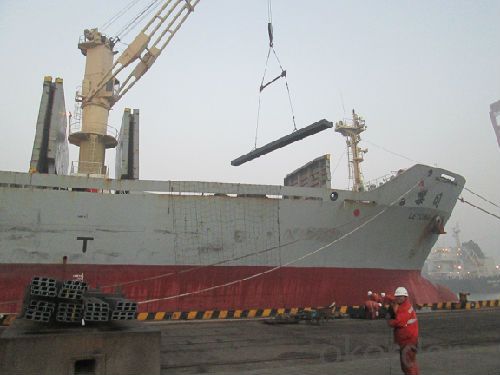
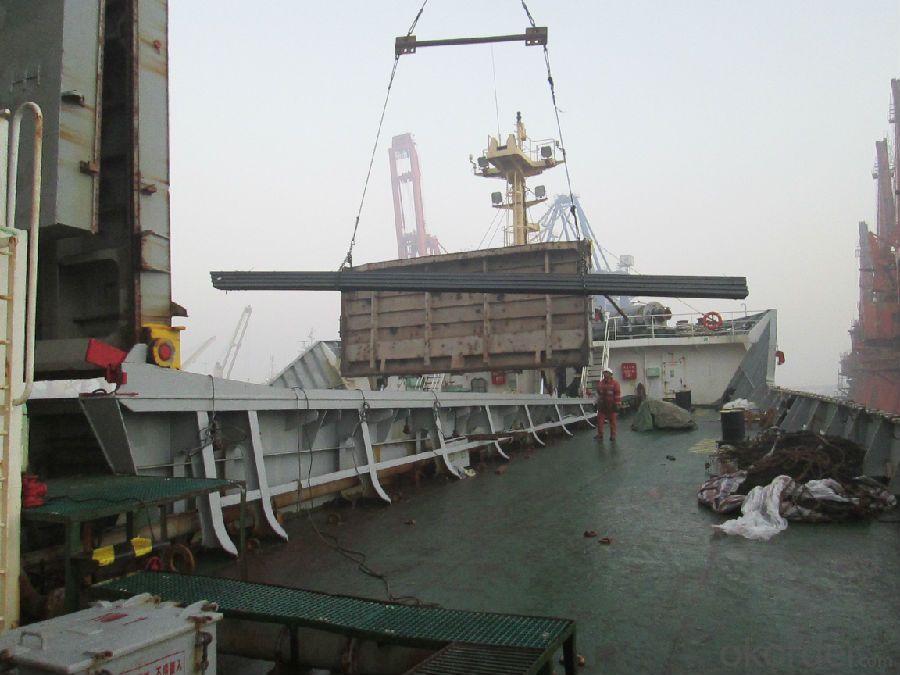
- Q: Is the bottom of the channel not real? Why do we open the hole? What's the reason?
- Is the most ideal processing equipment of stainless steel and flat iron, steel, steel, iron pipes and other processing households, profile processing businesses.
- Q: What are the recommended safety precautions when working with steel channels?
- To ensure a safe working environment when handling steel channels, it is crucial to adhere to recommended safety measures. These measures encompass the following: 1. Personal Protective Equipment (PPE): Make it a priority to wear appropriate PPE, such as safety glasses, steel-toed boots, gloves, and a hard hat. This equipment will safeguard you against potential hazards, such as falling objects, sharp edges, and sparks. 2. Training: Acquire proper training on the handling of steel channels, including safe lifting and carrying techniques. Due to their weight and unwieldiness, understanding the correct methods will help prevent strains, sprains, or other injuries. 3. Inspection: Before usage, thoroughly inspect steel channels to identify any defects or damage. Defective channels compromise safety, so it is imperative to ensure they are in good condition before installation or use. 4. Secure Storage: Store steel channels in a designated area where they are adequately secured to prevent accidents or falls. Proper storage also minimizes damage to the channels and reduces the risk of potential injuries. 5. Handling and Lifting: When lifting steel channels, always employ mechanical lifting equipment or adhere to proper manual handling techniques. Avoid bending or twisting your body during the lifting process to avert strains or back injuries. 6. Fire Prevention: Steel channels can produce sparks during fabrication or welding processes, necessitating fire prevention measures. Keep the work area clear of flammable materials, have readily accessible fire extinguishers, and follow established fire safety protocols. 7. Proper Ventilation: Ensure that the work area has sufficient ventilation to minimize exposure to fumes or gases released during welding or cutting procedures. 8. Communication: Maintain effective communication with fellow workers in the vicinity to prevent accidents caused by lack of coordination or awareness. Utilize hand signals, radios, or other suitable means to ensure everyone is cognizant of each other's actions. 9. Emergency Preparedness: Familiarize yourself with emergency procedures and have a readily available first aid kit. In the event of an accident or injury, knowing how to respond promptly and appropriately can help mitigate the severity of the situation. By adhering to these recommended safety precautions, the risk of accidents or injuries when working with steel channels can be significantly reduced. Prioritizing safety guarantees a productive and secure work environment for all individuals involved.
- Q: How do steel channels compare to other materials like wood or aluminum?
- Steel channels outperform other materials such as wood or aluminum in several ways. To begin with, steel channels are renowned for their exceptional strength and durability. They can withstand heavy loads without damage or deformation, making them ideal for industries like construction or manufacturing that demand structural integrity and stability. In contrast, wood channels have limited weight-bearing capacity and are prone to rot, warping, and termite infestation. Meanwhile, aluminum channels may not possess the same level of strength as steel, rendering them unsuitable for heavy-duty applications. Furthermore, steel channels provide excellent fire resistance. Unlike wood, which is combustible, steel channels do not contribute to the propagation of fire. Consequently, they are a safer choice in settings where fire safety is a concern, such as commercial buildings or industrial facilities. Another advantage of steel channels is their low maintenance requirements. Steel is resistant to corrosion, rust, and decay, eliminating the need for regular treatment or painting to maintain structural integrity. Conversely, wood channels necessitate periodic staining, sealing, or repainting to prevent deterioration, while aluminum channels may require coating or anodizing to guard against corrosion. Moreover, steel channels are readily available and cost-effective. Given the widespread use of steel in various industries, steel channels are easily accessible. Additionally, the production of steel channels is efficient and cost-effective, making them a more affordable option when compared to materials like wood or aluminum. However, it is important to acknowledge that each material possesses its own unique properties and advantages. For instance, wood offers a natural and aesthetic appeal that cannot be replicated by steel. On the other hand, aluminum is lightweight and boasts good thermal conductivity, making it suitable for specific applications. In conclusion, steel channels excel in terms of strength, durability, fire resistance, low maintenance requirements, and cost-effectiveness when compared to materials like wood or aluminum. They are particularly well-suited for applications that demand strength, longevity, and fire safety.
- Q: How do steel channels contribute to the overall sustainability of the construction industry?
- Steel channels contribute to the overall sustainability of the construction industry by providing a durable and versatile material that can be easily reused and recycled. This reduces the need for new steel production, conserves natural resources, and minimizes waste. Additionally, steel channels offer strength and structural support, allowing for efficient and long-lasting building designs that can withstand various environmental conditions, ultimately reducing the need for frequent repairs or replacements.
- Q: How do steel channels contribute to sustainable construction?
- Steel channels contribute to sustainable construction in several ways: 1. Durability: Steel channels are highly durable and resistant to corrosion, which means they have a longer lifespan compared to other construction materials. This reduces the need for frequent repairs and replacements, resulting in less waste generation and lower environmental impact. 2. Recyclability: Steel is one of the most recycled materials globally, and steel channels can be easily recycled without losing their properties. Using recycled steel channels in construction projects reduces the demand for new steel production, conserves natural resources, and minimizes greenhouse gas emissions associated with manufacturing new steel. 3. Structural efficiency: Steel channels have excellent strength-to-weight ratio, allowing for the creation of strong and stable structures while using less material. This efficiency leads to reduced material consumption, lower transportation costs, and decreased energy requirements during construction. 4. Design flexibility: Steel channels offer design flexibility, enabling architects and engineers to create innovative and sustainable structures. Their versatility allows for the optimization of building layouts, efficient use of space, and integration of energy-efficient systems, such as solar panels or rainwater harvesting systems. 5. Energy efficiency: Steel channels can be used as part of energy-efficient construction systems, such as insulated wall panels or roof trusses. These systems help improve a building's thermal performance, reducing energy consumption for heating and cooling. Moreover, steel channels can support the installation of energy-saving technologies, such as LED lighting or smart building management systems. 6. Resistance to natural disasters: Steel channels provide excellent resistance to extreme weather events like hurricanes, earthquakes, and fires. Building with steel channels can enhance the structural integrity of a construction, making it more resilient and reducing the risk of damage or collapse during such events. In summary, steel channels contribute to sustainable construction by offering durability, recyclability, structural efficiency, design flexibility, energy efficiency, and resistance to natural disasters. These features help reduce environmental impacts, conserve resources, and create long-lasting, sustainable buildings.
- Q: Are steel channels suitable for earthquake-prone regions?
- Steel channels are indeed suitable for earthquake-prone regions. Steel is known for its high strength and ductility, making it a popular choice for earthquake-resistant construction. Steel channels, in particular, offer several advantages in seismic regions. Firstly, steel channels possess excellent load-bearing capabilities, allowing them to withstand the forces generated during an earthquake. Their shape provides structural rigidity and stability, minimizing the risk of collapse or damage. Steel's inherent flexibility also enables it to absorb and dissipate seismic energy, reducing the impact on the overall structure. Additionally, steel channels can be easily customized and fabricated to meet specific building requirements. This adaptability allows engineers to design structures with appropriate seismic resistance, ensuring that they can withstand the expected ground motion. Steel channels' dimensional accuracy and uniformity also contribute to better construction quality and performance during earthquakes. Another advantage of steel channels is their fire resistance. Unlike other building materials, such as wood or concrete, steel does not burn or contribute to the spread of fire. This characteristic makes steel channels a safer choice for earthquake-prone regions, where fires can often occur due to ruptured gas lines or electrical failures during seismic events. Moreover, steel's durability and resistance to corrosion make it ideal for long-term use in earthquake-prone areas. Steel channels require minimal maintenance and have a longer lifespan compared to other materials, ensuring the continued safety and stability of structures over time. In conclusion, steel channels are highly suitable for earthquake-prone regions due to their strength, ductility, load-bearing capabilities, adaptability, fire resistance, and durability. These qualities make steel channels a reliable choice for constructing earthquake-resistant buildings that can withstand the forces generated by seismic events.
- Q: What are the common design considerations for steel channels?
- When designing steel channels, there are several common considerations that need to be taken into account. These considerations include the following: 1. Load capacity: One of the primary design considerations for steel channels is their load-bearing capacity. The channel must be able to support the applied loads without experiencing excessive deflection or failure. This involves calculating the maximum expected loads and selecting a channel size and material that can safely carry these loads. 2. Material selection: Steel channels are available in various materials, including carbon steel and stainless steel. The material selection depends on factors such as the required strength, corrosion resistance, and cost. Different steel grades have different mechanical properties, and the appropriate material must be chosen based on the specific application. 3. Structural stability: Steel channels must possess adequate structural stability to resist buckling or collapsing under the applied loads. The design should consider the channel's length, support conditions, and the potential for lateral torsional buckling. By analyzing these factors, appropriate design measures can be taken to ensure the stability of the channel. 4. Connection design: Another important consideration is the design of the connections between steel channels and other structural elements. The connections must be designed to transfer loads effectively and securely, ensuring the overall structural integrity of the system. Factors such as joint type, fastener selection, and weld design need to be considered for proper connection design. 5. Fire resistance: In certain applications, fire resistance is a critical consideration for steel channels. The design should account for the required fire rating by incorporating appropriate fire protection measures, such as intumescent coatings or fire-resistant insulation materials. 6. Manufacturing constraints: The design must also take into consideration the manufacturing constraints involved in producing steel channels. This includes considerations such as standard sizes, manufacturing tolerances, and availability of specific profiles. By working within these constraints, the design can be optimized for ease of production and cost-effectiveness. In conclusion, when designing steel channels, it is crucial to consider factors such as load capacity, material selection, structural stability, connection design, fire resistance, and manufacturing constraints. By addressing these considerations, engineers can develop safe and efficient designs for steel channels that meet the specific requirements of the intended application.
- Q: Can steel channels be galvanized or coated?
- Steel channels can indeed undergo galvanization or coating. Galvanization is a process wherein a layer of zinc is applied to the steel channel's surface to safeguard it against corrosion. This procedure involves dipping the steel channel into molten zinc or utilizing other techniques like electroplating or spraying to apply a zinc coating. By doing so, the zinc coating acts as a barrier between the steel and its surroundings, effectively preventing rusting. Alternatively, coating steel channels presents another option for corrosion protection. There exists a range of coating types, such as epoxy, polyurethane, or powder coatings, which can be applied to the steel channel's surface. These coatings establish a protective layer that shields the steel from moisture, chemicals, and other corrosive elements. Both galvanizing and coating steel channels serve to enhance their durability and extend their lifespan. The decision to employ galvanization or coating relies on various factors, including the intended application, environmental conditions in which the steel channel will be in use, and the desired aesthetic appearance.
- Q: Can steel channels be used for window lintels?
- Yes, steel channels can be used for window lintels.
- Q: What are the typical applications of steel channels?
- Steel channels have a wide range of applications across various industries due to their structural strength and versatility. Some typical applications of steel channels include: 1. Construction: Steel channels are commonly used in construction projects for framing, support beams, and bracing. They provide structural stability and can bear heavy loads, making them ideal for constructing buildings, bridges, and other infrastructure. 2. Manufacturing: Steel channels are frequently utilized in the manufacturing industry for creating industrial equipment, machinery, and conveyors. They can be easily welded or bolted together to form sturdy frames or support structures. 3. Electrical and Telecommunications: Steel channels are often employed in the electrical and telecommunications sector for cable management and support. They serve as sturdy raceways for electrical wires, conduits, and communication cables, ensuring safe and organized installations. 4. Automotive Industry: Steel channels are used in the automotive industry for manufacturing car frames, chassis, and suspension systems. Their high strength and durability help provide structural integrity and enhance overall vehicle safety. 5. Furniture and Shelving: Steel channels are commonly found in the production of furniture and shelving units. They are used to construct frames, supports, and brackets for various types of furniture, such as desks, tables, and storage racks. 6. Solar Panel Mounting: Steel channels are employed in the mounting systems of solar panels. They offer a durable and stable support structure for the panels, ensuring they are securely positioned and able to withstand various weather conditions. 7. Marine and Offshore: Steel channels are extensively used in marine and offshore applications due to their corrosion resistance and strength. They are employed in shipbuilding, offshore platforms, and marine structures where durability and reliability are crucial. 8. Agricultural Equipment: Steel channels find applications in the agricultural sector for building machinery and equipment like tractors, plows, and harvesters. They provide the necessary strength and rigidity to withstand the demanding conditions of agricultural operations. Overall, steel channels are an essential component in numerous industries where strength, durability, and versatility are required. Their applications vary from construction and manufacturing to electrical installations, automotive manufacturing, furniture production, and beyond.
Send your message to us
Hot Rolled GB Standard Channel Steel
- Loading Port:
- China Main Port
- Payment Terms:
- TT or LC
- Min Order Qty:
- 50 m.t.
- Supply Capability:
- 10000 m.t./month
OKorder Service Pledge
OKorder Financial Service
Similar products
Hot products
Hot Searches
Related keywords











